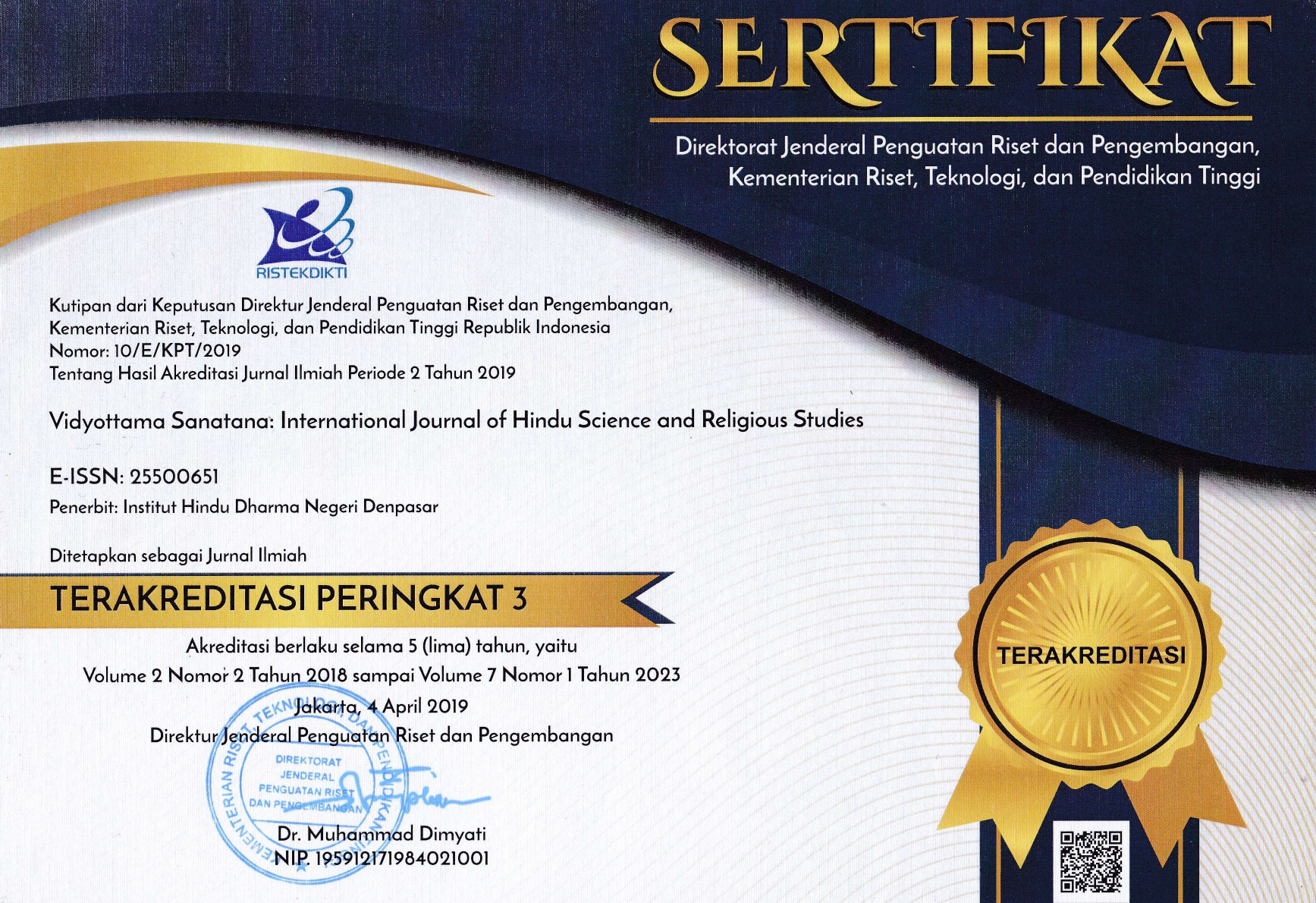AWAR – AWAR PLANTS (FICUS SEPTICA BURM) AS TRADITIONAL MEDICINES IN USADHA TARU PRAMANA'S LONTAR
DOI:
https://doi.org/10.25078/vidyottama.v6i1.802Keywords:
Awar-Awar Plant (Ficus Septica Burm), Traditional MedicineAbstract
This study discusses the Awar-Awar Plant (Ficus Septica Burm) as Traditional Medicine in Usadha Taru Pramana Lontar. The method used is a quantitative approach with Gravimetry, Semimikrokjeldahl, and Soxhlet methods. The research results obtained include: Chemical Content and Benefits of the Awar-Awar Plant (Ficus Septica Burm), namely; (1), 2-Demethoxytylophorine (2), Isotylocrebine (3), Tylocrebine (4), Tylophorine (5), 10S,13aR-anofine N-oxide (6), Dehydrotylophorine (7), and Ficuseptine A (8), flavonoid content in the form of kaempferitrin (9) and genistin (10), (11) and coumarin compounds. Its benefits are as a remedy for skin diseases, appendicitis, overcoming ulcers, overcoming venomous snake bites and shortness of breath.
References
Arisandi. (2011). Khasiat Berbagai Tanaman untuk Pengobatan Berisi 158 Jenis Tanaman Obat.
Hesti Mulyani, dkk. (2016). Tumbuhan Herbal Sebagai Jamu Pengobatan TradisionalTerhadap Penyakit Dalam Serat primbon Jampi Jilid I. Jurnal Penelitian Humaniora, 21(2).
Inventaris Tanaman Obat Indonesia. Edisi kedua, jakarta, departemen Kesehatan RI, (1991).
Jacoeb, D. (2010). Deskripsi histologis dan Perubahan komposisi Kimia Daun dan Tangkai Semanggi (Marsilea crenoto Presl, Marsileaceae) akibat perebusan. Pengolahan Hasil Perikanan Indonesia, XIII(2).
Subagia, I. N., Widya Sena, I., & Suta, I. M. (2020). Comparative Study of Water Before and After Mantra Treatment (Hindu Perspective). https://doi.org/10.4108/eai.13-12-2019.2298312
Zulki li. (2004). Pengobatan Tradisional


















